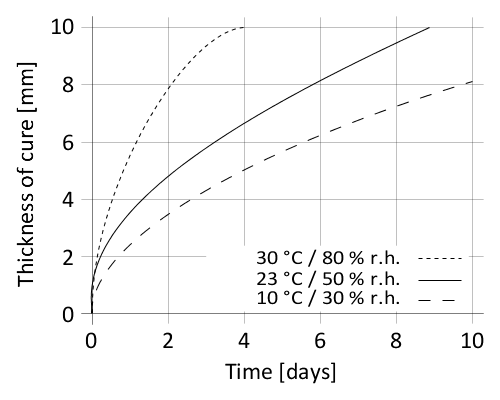Sikaflex®-668
Sikaflex®-668 is based on Purform®, a polyurethane with less than 0.1% monomeric diisocyanate for better health protection and occupational safety. The Sikaflex®-668 adhesive system is specifically designed for the rail industry. It is suitable for assembly bonding and glazing applications. Its weathering and unique resistance to a wide variety of cleaning agents makes it a very good solution for use in exterior joints. Sikaflex®-668 can be accelerated with Sika’s Booster and PowerCure system.
- Less than 0.1 % monomeric diisocyanate for better health protection and occupational safety
- Very good weathering stability
- Resistant to a wide variety of cleaning agents
- Passes EN45545 R1/R7 HL3, NFPA 130, BSS 7239
- Curing can be accelerated with Sika Booster and Sika PowerCure
- Phthalate-free
PRODUCT BENEFITS
- Less than 0.1 % monomeric diisocyanate for better health protection and occupational safety
- Very good weathering stability
- Resistant to a wide variety of cleaning agents
- Passes EN45545 R1/R7 HL3, NFPA 130, BSS 7239
- Curing can be accelerated with Sika Booster and Sika PowerCure
- Phthalate-free
Areas of Application
Sikaflex®-668 is designed for assembly and direct-glazing applications in rail, the commercial vehicle industry and for the repair market. It exhibits very good tooling and application properties. With its superior resistance to a wide range of cleaning agents combined with outstanding weathering resistance, it can be used for exterior joints.Seek manufacturer’s advice and perform tests on original substrates before using Sikaflex®-668 on materials prone to stress cracking.
This product is suitable for experienced professional users only. Tests with actual substrates and conditions have to be performed ensuring adhesion and material compatibility.
Packaging
| Unipack | 600 ml |
| Pail | 23 l |
| Drum | 195 l |
Product Details
| Chemical base | 1-component polyurethane (Purform®) | |
| Color (CQP001-1) | Black | |
| Cure mechanism | Moisture-curing | |
| Density (uncured) | 1.3 kg/l | |
| Non-sag properties (CQP061-1) | Very good | |
| Application temperature | 10 ─ 35 °C | |
| Skin time (CQP019-1) | 60 minutes A | |
| Open time (CQP526-1) | 50 minutes A | |
| Curing speed (CQP049-1) | (see diagram) | |
| Shrinkage (CQP014-1) | 1 % | |
| Shore A hardness (CQP023-1 / ISO 48-4) | 60 | |
| Tensile strength (CQP036-1 / ISO 527) | 8 MPa | |
| Elongation at break (CQP036-1 / ISO 527) | 500 % | |
| Tear propagation resistance (CQP045-1 / ISO 34) | 12 N/mm | |
| Tensile lap-shear strength (CQP046-1 / ISO 4587) | 5 MPa | |
| Service temperature (CQP509-1 / CQP513-1) | -50 ─ 90 °C | |
| Shelf life (CQP016-1) | unipack | 12 months B |
| CQP = Corporate Quality Procedure | A) 23 °C / 50 % r. h. | B) stored below 25 °C |
CURE MECHANISM
Sikaflex®-668 cures by reaction with atmospheric moisture. At low temperatures the water content of the air is generally lower and the curing reaction proceeds somewhat slower (see diagram 1).

Diagram 1: Curing speed Sikaflex®-668
CHEMICAL RESISTANCE
Sikaflex®-668 is generally resistant to fresh water, seawater, diluted acids and diluted caustic solutions; temporarily resistant to fuels, mineral oils, vegetable and animal fats and oils; not resistant to organic acids, glycolic alcohol, concentrated mineral acids and caustic solutions or solvents.
It is resistant to a wide range of rail cleaning agents if used according to the guidelines of the manufacturer. Some rail cleaning agents contain aggressive chemicals such as phosphoric acids which may influence the durability of Sikaflex®-668 significantly. Therefore it is of highest importance to limit the exposure time to a minimum, observe correct dilution of cleaning agent and to perform a thorough rinsing after the cleaning process. Test newly introduced cleaning agents.
The above information is offered for general guidance only. Advice on specific applications will be given on request.
Application
Surface preparation
Surfaces must be clean, dry and free from grease, oil, dust and contaminants. Surface treatment depends on the specific nature of the substrates and is crucial for a long lasting bond. All pretreatment steps must be confirmed by preliminary tests on original substrates considering specific conditions in the assembly process.
Note: The maximum primer flash-off time is limited to 8 hours for Sikaflex®-668 at temperatures above 30 °C. The primer must then be reactivated with Sika® Aktivator-100 prior the bonding process.
Application
Sikaflex®-668 can be processed with manual, pneumatic or electric driven piston guns as well as pump equipment.
Sikaflex®-668 can be processed between 10 °C and 35 °C (climate and product) but changes in reactivity and application properties have to be considered. The optimum temperature for substrate and sealant is between 15 °C and 25 °C.
Consider that the viscosity will increase at low temperature. For easy application, condition the adhesive at ambient temperature prior to use.
To ensure a uniform thickness of the bondline it is recommended to apply the adhesive in form of a triangular bead (see figure 1).

Figure 1: Recommended bead configuration
The open time is significantly shorter in hot and humid climate. The parts must always be installed within the open time. Never join bonding parts if the adhesive has built a skin.
For advice on selecting and setting up a suitable pump system, contact the System Engineering Department of Sika Industry.
Tooling and finishing
Tooling and finishing must be carried out within the skin time of the product. It is recommended using Sika® Tooling Agent N. Other finishing agents must be tested for suitability and compatibility.
Removal
Uncured Sikaflex®-668 may be removed from tools and equipment with Sika® Remover-208 or another suitable solvent. Once cured, the material can only be removed mechanically. Hands and exposed skin have to be washed immediately using hand wipes such as Sika® Cleaner-350H or a suitable industrial hand cleaner and water.
Do not use solvents on skin.
